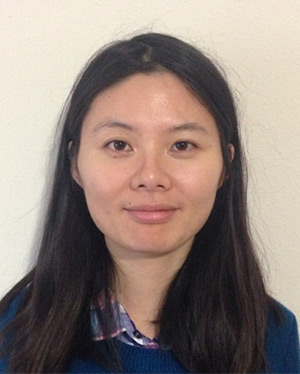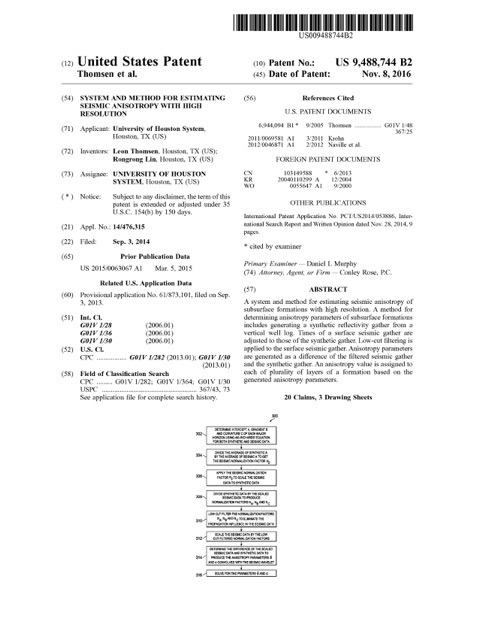Patent is Result of Work of Rongrong Lin and Her Advisor Leon Thomsen
U.S. Patent 9,488,744 (recently issued to the University of Houston), is based upon the master’s thesis awarded by Department of Earth and Atmospheric Sciences in 2013 to Rongrong Lin. The patent is titled, System and Method for Estimating Seismic Anisotropy with High Resolution.
 Lin and her advisor, Research Professor Leon Thomsen, solved a problem of over 30
years standing in the field of high-tech exploration geophysics. Their algorithm disrupts
procedures used for decades by oil companies and their geophysical service providers
to reduce the risk in drilling for petroleum, and opens the door to improve those
procedures.
Lin and her advisor, Research Professor Leon Thomsen, solved a problem of over 30
years standing in the field of high-tech exploration geophysics. Their algorithm disrupts
procedures used for decades by oil companies and their geophysical service providers
to reduce the risk in drilling for petroleum, and opens the door to improve those
procedures.
Most oil exploration involves the transmission of sound into the earth, and the recording of its faint echoes from the subsurface strata. The data are manipulated (in the computer) into images of those subsurface layers, which reveal their geometry, but not the nature of the fluid (water? oil? gas?) residing in the pore space of the rocks.
However, over 30 years ago, it was discovered that the amplitude of the reflections, and its variation with source-receiver separation, do contain valuable clues about the nature of those fluids. The application of these ideas (called “AVO” technology) has played an important role in the discovery of billions of barrels of oil over the past three decades.
 But, the theory used to understand the effect was flawed, making naïve assumptions
about the subsurface rock formations and ignoring a theoretical term which was potentially
as large as those terms which were retained. For more than 30 years, this flaw was
recognized, but there was no feasible way to estimate the neglected term in field
data.
But, the theory used to understand the effect was flawed, making naïve assumptions
about the subsurface rock formations and ignoring a theoretical term which was potentially
as large as those terms which were retained. For more than 30 years, this flaw was
recognized, but there was no feasible way to estimate the neglected term in field
data.
The Lin thesis describes a feasible algorithm to do that, and the patent gives this invention the protection of law. It means that all companies using AVO to reduce exploration risk will have to generalize their procedures to include this refinement, licensing the right to do so from UH. They will do so happily, as it will help them further reduce their exploration risk.
Lin has been employed by a geophysical service provider since her graduation in 2013. She plans to enter the Ph.D. program in geophysics at UH EAS next year, to extend and improve the algorithm. We hope that more UH intellectual property will emerge from her research.